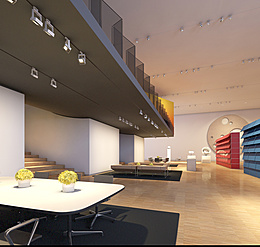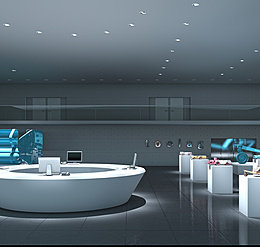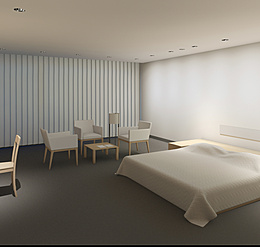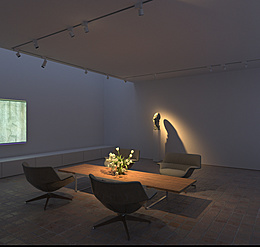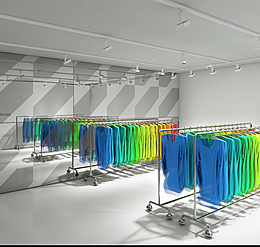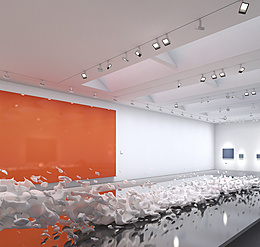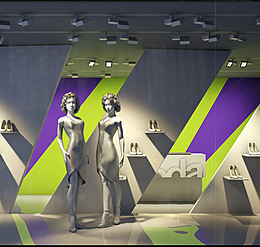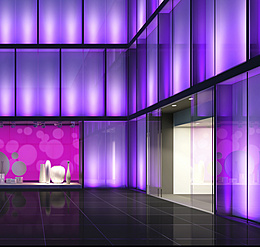
Luminous surfaces produce a soft light in the room through the diffuse dispersion of light. By contrast, illumination with directed light allows the three-dimensionality of shapes, materials and textures to be emphasised through stronger shadows. Furthermore, illumination with hard-edged beams allows zones to be defined in order to divide the room or attract attention.
The curtain and luminous furniture serve as self-illuminated elements here. The light coming in through the curtain is associated in the mind with daylight producing a natural appearance to the interior. The illumination, in this case, is provided by recessed ceiling luminaires. In contrast to self-illuminating panels where increased brightness is evident immediately in front of the luminous surface, an object can be illuminated by directing the light over distances using reflectors.








